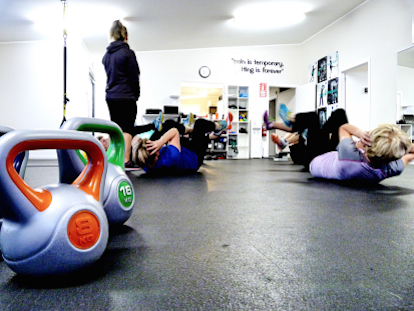Are you a dancer who wants to improve your technique, flexibility or just prevent those niggly injuries that can keep you from training?
Here at Bureta physio we have a dedicated physiotherapist who can help you with this.
As a dancer you will be aware of the importance of core stability to improve turns, control arabesque and prevent many back issues. You may already being lots of training for it but are you really doing what you need to do to get the most out of it.
Core stability is not about doing hundreds of sit ups, getting a ‘six-pack’ or being able to hold a plank position for 3 minutes (although these do still have their purposes!)
True Core Stability IS…
- The ability to control the spine dynamically, that is, with movement.
- Fine co-ordination of all of the muscles that control your trunk, not just the abdominals.
- The ability to adjust the level of control needed, depending on the situation.
- Creating a stable base off which to work the limbs.
- Stabilizing the mid-section to allow smooth and effective transfer of force through the body.
While everyone needs some level of core stability, some people need more than others. For a dancer, core stability needs to be fantastic fine coordination of all of the muscles to allow controlled mobility of the pelvis and spine with movement, rather than bracing in one spot.
So How Do We Do That?
True core stability exercises are extremely hard to do properly and very easy to do wrong. The purpose of our specific dance pilates courses are to ensure you understand the finer details required to gain true core stability and a progressive system of exercises the train your muscles in the best possible way.
Flexibility
Our dance pilates classes also provide ways to improve your flexibility in a safe but effective manner. Unfortunately we often see injuries that are caused by over-stretching, especially on young bodies that are still developing. Its not that as a physiotherapists we are against improving flexibility but this can be achieved through controlled and safe methods not putting joints or muscles through undue stress.
Lucy Poole, one of our physiotherapists here at Bureta is experienced with working with dancers both from a amateur level through to professional so you can get the most from your dancing. This can be through a one to one physiotherapy session, one to one pilates classes or in our group dance pilates classes.
The goal of the classes is to improve dance technique and reduce dance related injuries that we see a lot in the clinic. Simple postural and muscle balance adjustments can make a huge difference to current performance and prevent time off due to injury.
They will run for 6 consecutive weeks at a cost of $80 for 6 consecutive sessions.
